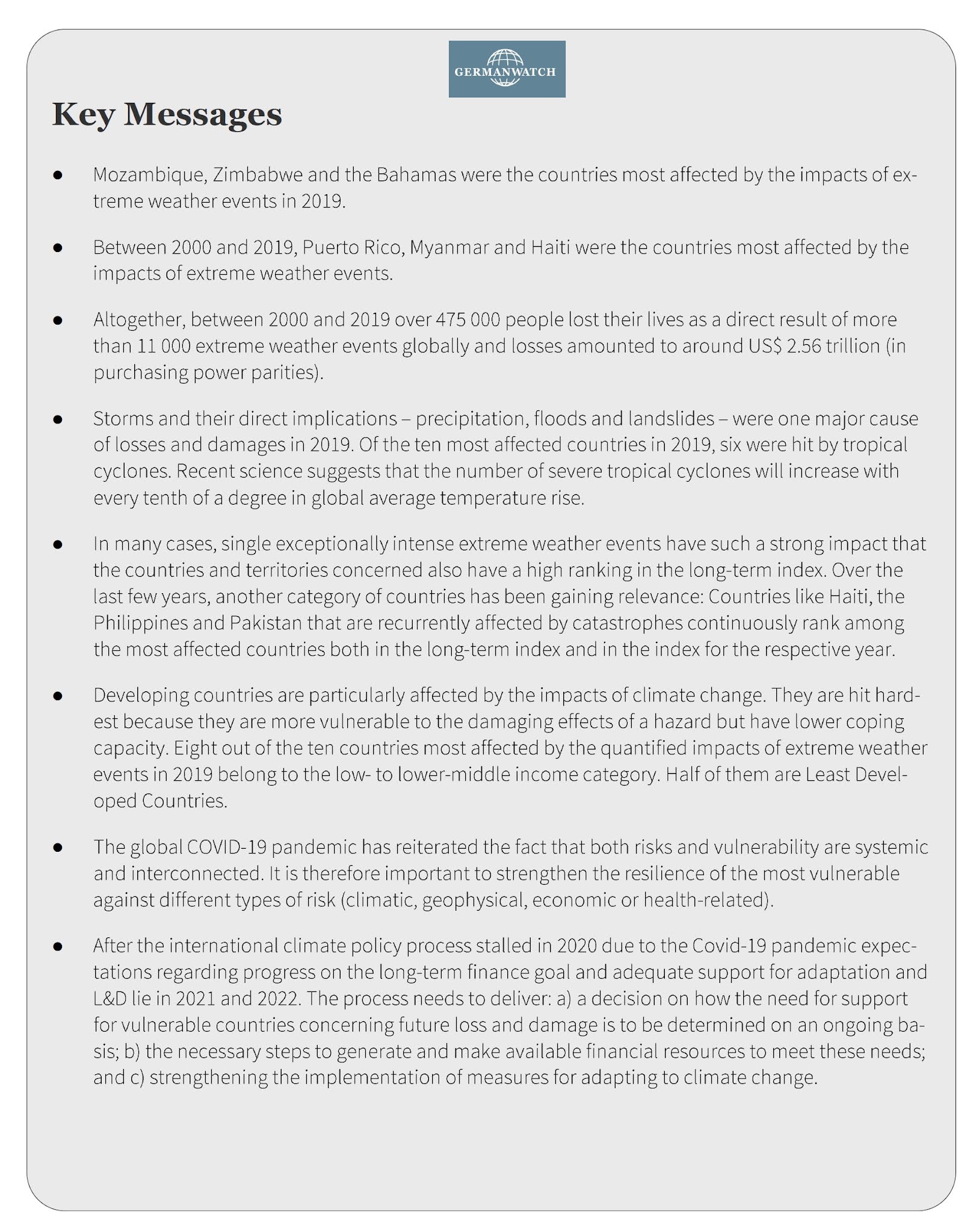The Global Climate Risk Index (GCRI) and calculation methodologies - suggestions for improvement
Global Climate Risk Index - Analysis and Issues
- The story: The Barbados Prime Minister’s remark on immoral measuring of extent of loss caused by climate change with respect to lives and livelihoods at COP-26 has brought the complexity in measuring climate risk to the forefront. It is clear that not all nations view climate change risks equally, and now more are vocal about it too.
- Understanding climate risk: The IPCC defines climate risk as the likelihood of unfavourable impacts occurring as a result of severe climate events interacting with vulnerable environmental, social, economic, political or cultural conditions. So it is the product of the probability of a climate event occurring and its adverse consequences. [IPCC - Intergovernmental Panel on Climate Change]
- Global Climate Risk Index (GCRI): As per the Global Climate Risk Index 2021, India was ranked the 7th worst-hit country in 2019. So what exactly does it measure?
- The Index analyses to what extent countries have been affected by the impacts of weather-related loss events (storms, floods, heat waves etc.).
- It is published annually by GermanWatch, a non-profit organisation.
- The latest version of the GCRI, published January 2021, ranked 180 countries based on the impact of extreme weather events and associated socio-economic data from 2000-2019.
- This index uses historical data to provide insights on exposure to extreme events, and cannot be used for linear forecasts about future climate impact.
- Country rankings controversy: Different countries have raised doubts about the methods being used.
- Selection of indicators - The GCRI ranks countries based on four key indicators: Number of deaths, Number of deaths per 1,00,000 inhabitants, Sum of losses in Purchasing Power Parity (in U.S. dollars) and Losses per unit of GDP.
- Of these four, two are absolute while the other two are relative and the GCRI report does not provide a rationale for the selection of these macro indicators.
- Exclusion errors and selection bias - Composite indicators are better constructed using micro indicators instead of macro indicators because isolating the effect of the loss of elements on GDP is filled with errors.
- Key micro indicators such as the total number of people injured, loss of livestock, loss of public and private infrastructure, crop loss and others are better candidates for assessing the composite loss resulting from climate change events.
- Omission of geological incidents - The index accounts for information on weather-related events like storms, floods, temperature extremes and mass movements.
- It omits geological incidents like earthquakes, volcanic eruptions or tsunamis, which may be potentially triggered by climate change and can have economic and humanitarian impact.
- Unvalidated data - The ranking under the GCRI is done based on data collected by Munich Re’s NatCatService, which is not validated at the ground level. The data gaps with regard to economic losses are based on experience, the prevailing intellectual property of MunichRe and the market value of elements at risk.
- Delays in action and response - Any discussion on measurement and management of climate risk is incomplete without accounting for issues of uncertainty, scale and delays between action and response to climate change.
- Improving the GCRI: India’s module on National Disaster Management Information System (NDMIS) captures damages and losses caused by disasters and monitor the targets of Sendai Framework for Disaster Risk Reduction. The NDMIS captures details on parameters like death, injury as well as economic losses in social and infrastructure sectors due to weather and geological events on a daily basis including all major climatic events. Climate change can at best be managed within a comprehensive risk assessment framework, which uses climate information for better management of impact of climate change. Deploying effective approaches and principles to foster collaboration among climate risk information users and providers and enabling the implementation of effective management actions will help achieve the targets envisaged in the Sendai Framework.
- Summary: Every statistical exercise is based on some structural assumptions, and so is the GCRI assessment too. Taking into account the feedback of ranked countries, the index can now be improved.
- EXAM QUESTIONS: (1) Explain the parameters used to measure the country rank in the GCRI - Global Climate Risk Index. (2) Can a thing like "climate risk" ever be measured accurately? Comment analytically. (3) What three setbacks is India likely to face due to climate change? Comment.
#GCRI #ClimateRisk #ClimateChange #GermanWatch
* Content sourced from free internet sources (publications, PIB site, international sites, etc.). Take your own subscriptions. Copyrights acknowledged.




















COMMENTS